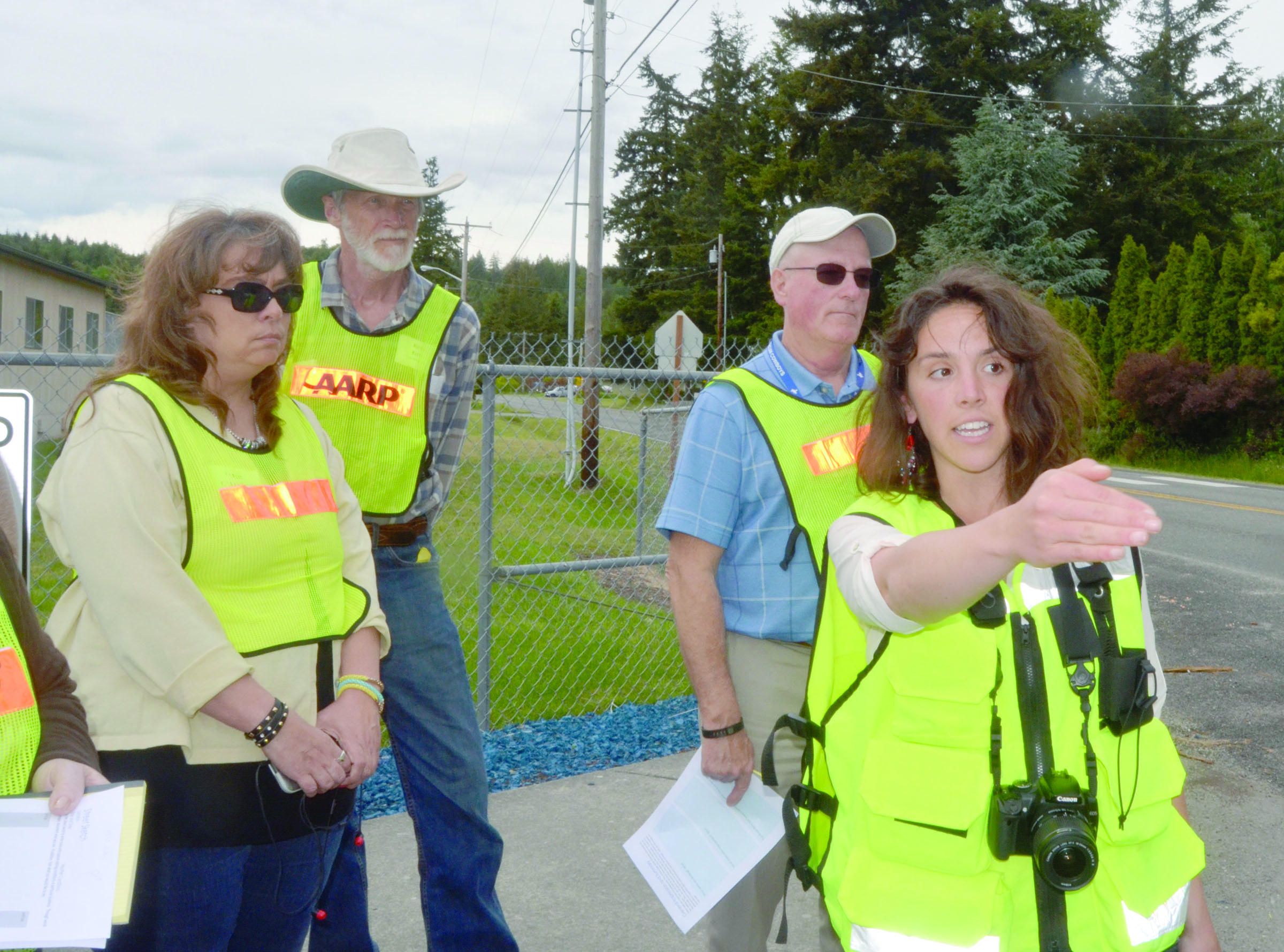CHIMACUM — Young people who walk and bicycle rather than ride in cars are healthier, said those who want to make it easier for students to move under their own power.
“Walking or bicycling to school can decrease obesity and diabetes and result in healthier students,” said Samantha Thomas, a consultant who moderated a “walking audit” of the area around Chimacum School that drew about 30 people last week.
“We want to create a better environment for kids, and making it easier for them to not drive or be driven to school is an important step,” Thomas said.
Thomas characterized the trend toward driving to school as “the loss of free range children,” adding that the number of children who walk or bike fell 75 percent between 1960 and 2009, with a corresponding 276 percent increase in childhood obesity during that period.
The event was a cooperative effort between the county’s public health and public works departments along with the ReCyclery’s “Step on It! Campaign” to promote walking and biking.
The goal was to gather community stakeholders together to help form a vision of how to overcome some of the barriers to walking and biking to school, according to Karen Obermeyer, an educator for the Jefferson County Department of Public Health.
Representatives of the school system, county government and police and fire departments attended.
Several parents and a few kids also joined in.
Thomas said that obstacles to success are both perceptual and physical.
There is the notion that children who are walking or bicycling to school are vulnerable to abductions, but these incidents are rare, she said.
Also, the physical layout around the Chimacum School campus is oriented toward automobiles and doesn’t accommodate walkers or bikers, she added.
Creating a better environments for biking and walking comes from two directions: accommodating technology for new road construction and retrofitting existing routes to help share the road.
For the former, building roundabouts, raised areas to discourage speeders and wider streets can be accomplished during major road projects, Thomas said.
With retrofits, center lines can be removed on slow traffic routes so cars don’t crowd bikes off the road and right turn lanes can be eliminated in favor of bike paths, she added.
“Most roads have been designed for cars and traffic,” Thomas said.
“We need to start designing them for people.”
Driver hostility toward cyclists is also a problem, said Melissa Jentzsch, a parent at the meeting.
Jentzsch said that her 14-year-old son Ethan can’t ride his bike to school because he can’t safely cross state Highway 19.
“There is a real issue,” she said.
“When drivers see walkers or cyclists, many of them speed up.
“It’s like they are angry. They don’t want to slow down and don’t want to have anything that keeps them from where they are going.”
Jentzch said the installation of crosswalks and flashing lights could make it safer for bikers and pedestrians but that wouldn’t solve the hostility problem.
Obermeyer said that some short-term steps toward the walkability goal include building sidewalks, bicycle paths and pedestrian-friendly infrastructure, reducing speeds in school zones and neighborhoods and discouraging distracted driving through educational programs.
In the long term, Obermeyer said that comprehensive plans for the city of Port Townsend and Jefferson County are in the revision process.
Citizen input during that process could result in healthier, more walkable neighborhoods.
For more information write KObermeyer@co.jefferson.wa.us.
________
Jefferson County Editor Charlie Bermant can be reached at 360-385-2335 or cbermant@peninsuladailynews.com.
